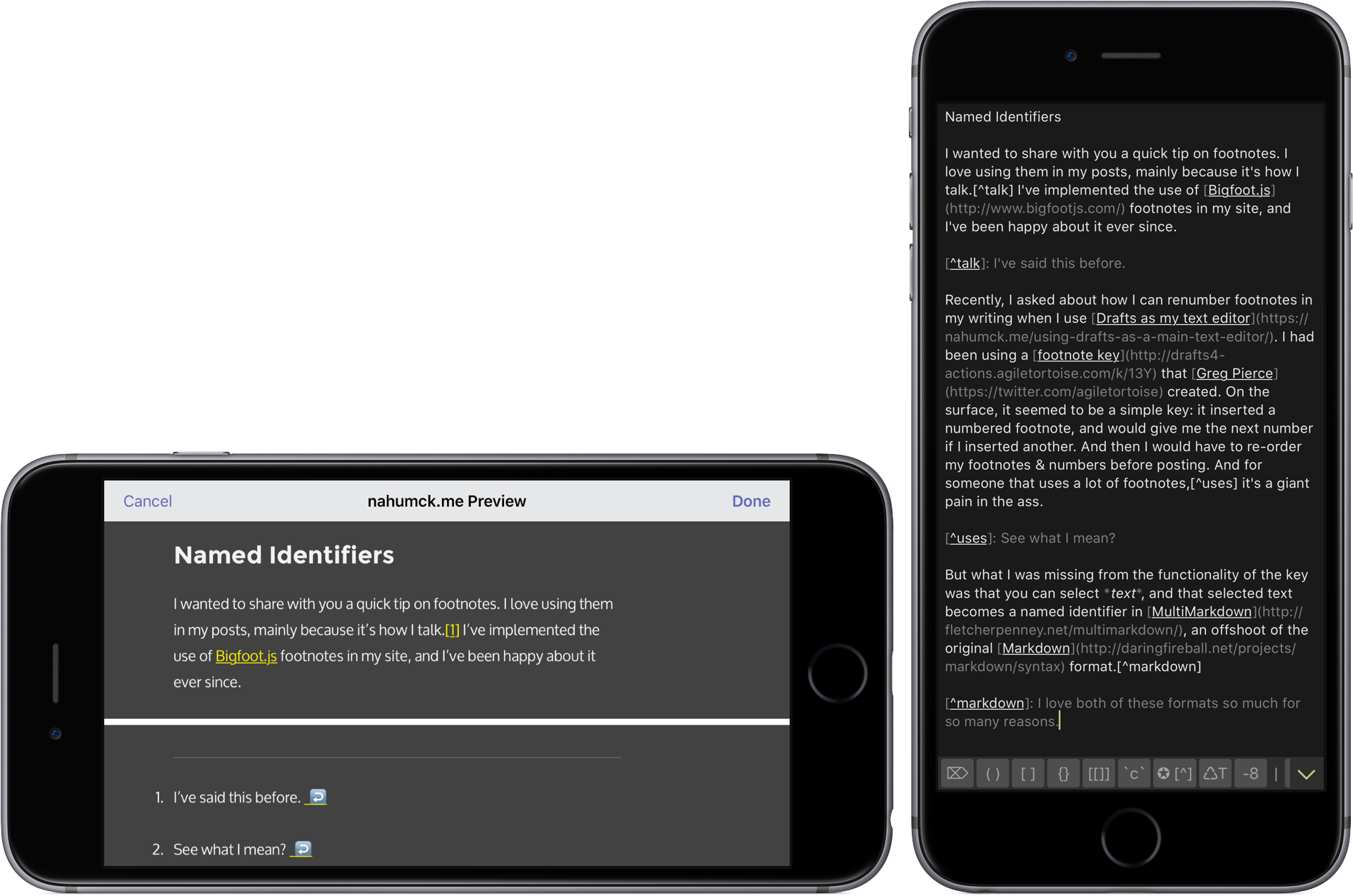Named Identifiers

I wanted to share with you a quick tip on footnotes. I love using them in my posts, mainly because it’s how I talk.[^1] I’ve implemented the use of Bigfoot.js footnotes in my site, and I’ve been happy about it ever since.
Recently, I asked about how I can renumber footnotes in my writing when I use Drafts as my text editor. I had been using a footnote key that Greg Pierce created. On the surface, it seemed to be a simple key: it inserted a numbered footnote, and would give me the next number if I inserted another. And then I would have to re-order my footnotes & numbers before posting. And for someone that uses a lot of footnotes,[^2] it’s a giant pain in the ass.
But what I was missing from the functionality of the key was that you can select text, and that selected text becomes a named identifier in MultiMarkdown, an offshoot of the original Markdown format.[3]
The beauty of using named identifiers is this: when you convert Markdown text to HTML, the footnotes automagically get numbered in the correct order. Moreover, no matter where the footnotes fall in your document, they will all get sorted out at the bottom of the HTML document. Because my custom preview formats the [[draft]] tag as HTML, I can simply view my preview at any time without having to convert my post.[4]
It’s such a small little thing, and one that I completely missed when I installed the key.[5] Now that I fully understand what it does, it takes me no time to add a simple footnote here or there. I also have a shortcut for my external keyboard set to ⌘+6 to speed up the creation. I don’t want to get too crazy with them,[6] but it’s nice to know that I have that ability available with relatively little effort.
I don’t have to stop and think about where things fall, how to rearrange them, what number I left off on, etc. Using them in this way allows me to write as I need to write, without the stop in my train of thought.[7]
This is a pretty fundamental change in the way that I work, but I think the result is really profound. If it’s a little difficult to understand my explanation, I hope that when you see the end result you’ll understand why creating footnotes in this manner can be very beneficial to your writing.

Having quick access to things like this just reminds me — yet again — that Drafts has a ton of hidden power, unlocked by the actions and keys. The more I use it, the more I explore the possibilities, the more I love it.
-
I’ve said this before. ↩
-
See what I mean? ↩
-
I love both of these formats so much for so many reasons. ↩
-
This saves me a ton of time now. ↩
-
You should really read the descriptions & the code a bit to understand what it fully does. And if you create your own keys, you should annotate the hell out of them. I need to be better at that, too. ↩
-
because that’s just annoying ↩
-
It gets derailed enough. ↩
